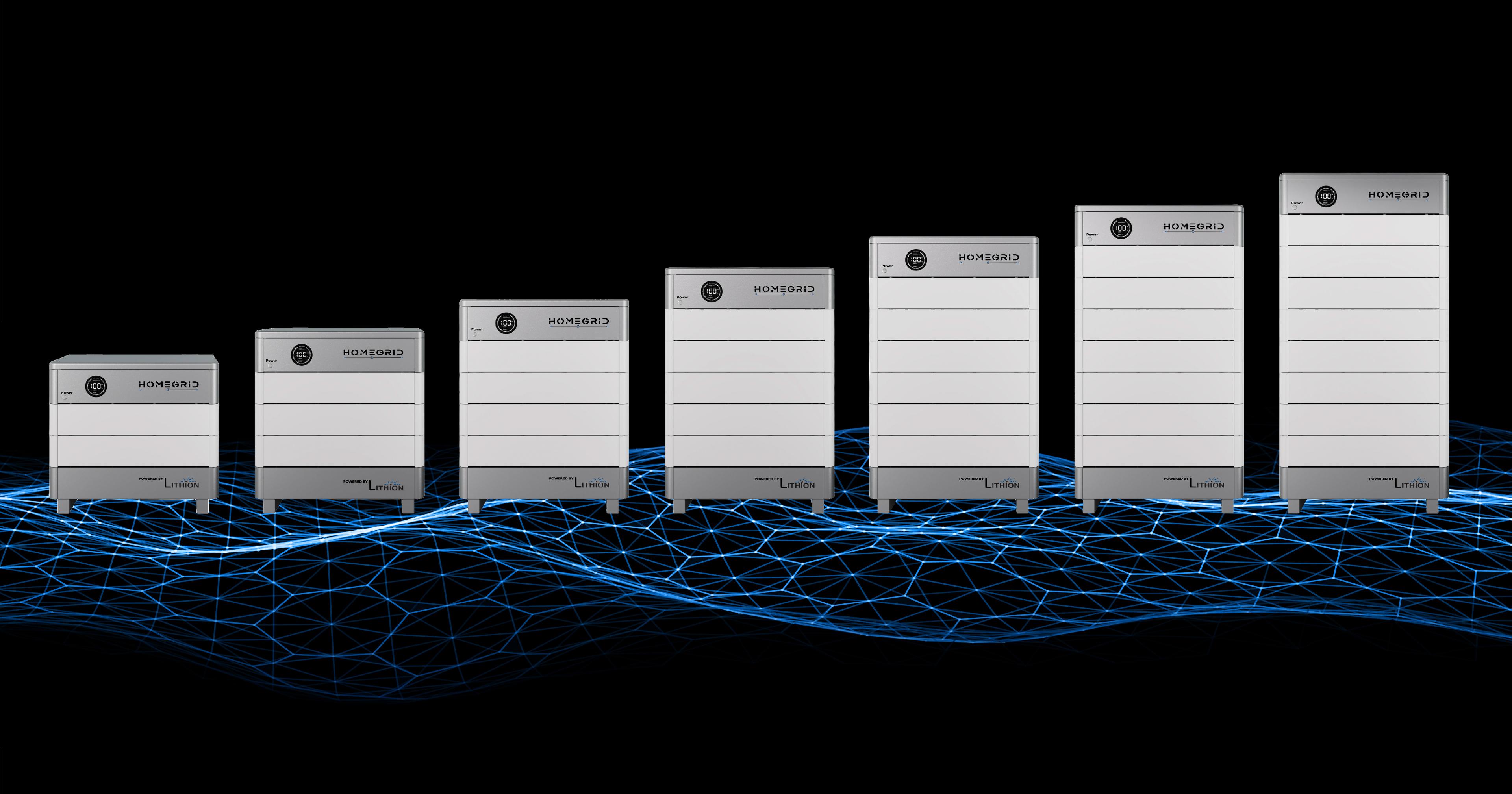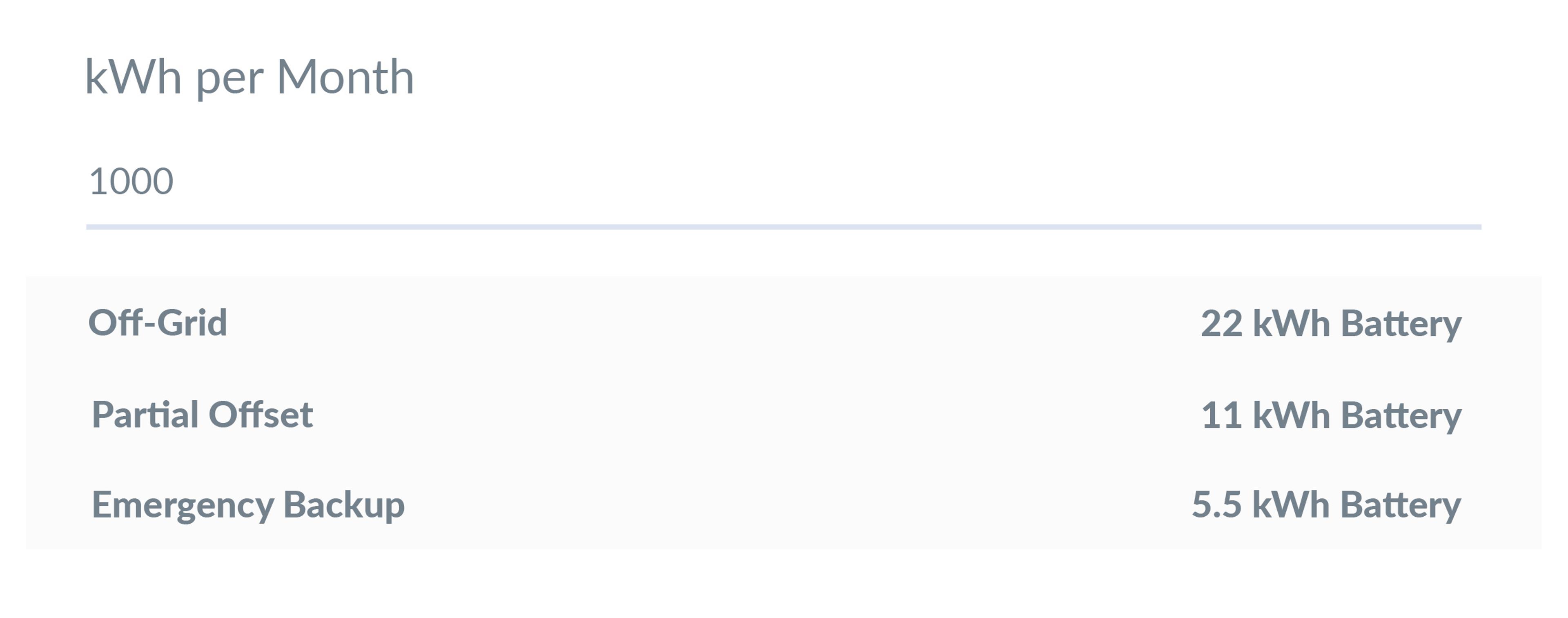4 Steps to Sizing Your Home Battery System

More homeowners and business owners are exploring home battery systems for backup power, grid independence, and energy savings than ever before. Having solar on its own is a great step, but what about when the grid is down? Or in the early evenings when the sun isn't shining and electricity prices are high?
Opting for home and business energy storage is an easy choice. Selecting the appropriate size for such a system, however, can be slightly complex. This guide simplifies the process, ensuring your home battery system aligns with your power needs.
How to Choose the Right Size Energy System for You
Having too small of a battery backup can be frustrating. You might not be able to use everything that you hoped when the power goes out. Even the best batteries have limits on what loads they can handle based on the capacity of the system.
On the other hand, having an over-sized system can be expensive and unnecessary. The goal is to get a system that fits your needs just right, plus some room to grow. This is ~magic number~ is different for every project based on the user's priorities and lifestyle. Luckily, the method for finding that number follows the same simple process we have outlined below.
1. Set Your Power Priorities
Determine the appliances and devices vital for your comfort and safety. This could range from basic necessities like lighting and heating to luxuries such as a hot tub. Decide if you need a comprehensive home backup, a partial backup, or just emergency support. This decision will shape the capacity and design of your home battery system.
2. Measure Your Electricity Needs
Once you have decided on a partial or full home backup, you need to figure out how much power those loads require. Begin by examining your electrical circuits to identify which ones you want to support during power outages. List these circuits and their amperage to gauge the power needs of your essential appliances and devices.
3. Calculate Your Energy Consumption
Knowing your energy consumption patterns is crucial for selecting a suitably sized battery system. To size your system accurately, calculate your average monthly energy usage by dividing your annual electricity bill by 12. This number gives you an idea of how much power you use each month.
Compare your average monthly usage (calculated above) to the highest energy use month. Enter data from your power bill (kWh) for your highest energy use month (usually a summer month) into our Sizing Tool for recommendations on battery size (example below).

These figures can help you decide how much battery backup you want. If you want a whole home backup, your system must be larger than your highest energy use month. No matter when an outage occurs, you can use electricity as if nothing happened.
If you want a partial home backup, you can select between a range of system sizes depending on your energy storage goals. Sizing a system based on your average monthly usage ensures that your battery covers most of your needs. You may experience limitations in the summer when usage is more than average.
For emergency backup purposes, size your system based on the most essential circuits in the house. If the grid is down, your home can still have power for the necessities. And you can have the peace of mind of emergency preparedness and energy independence.
4. Plan for Future Expansion
When choosing a battery, look for modular options like the HomeGrid Stack'd Series. These modern systems are designed with the flexibility to expand. If your energy needs change, you can easily add modules to your battery stack to customize your power.
Modular storage also helps when budgeting for a backup battery. You can start with a partial home backup and enjoy the many benefits of having an energy system. Over time, you can add modules and scale up to a whole home backup later when you're ready to increase your investment.
Integrated systems do not have the same flexibility. Homeowners can't increase their backup capacity without purchasing large units at a time. This can be expensive and require having more equipment than necessary.
System Sizing Matters
If you are on the fence about how much backup power to get, it's better to go for a larger backup battery rather than risk undersizing it. This way, you can have the power you need, when you need it.
From energy security or off-grid living to peak shaving or avoiding 15/30 minute demand charges, battery banks are becoming essential. Our approach ensures your system not only meets your current needs, but is also prepared for future capacity increases. By taking time to thoughtfully work through these steps, you can effectively size your home battery system.
For personalized sizing assistance, contact your local HomeGrid representative. They will gladly help you with a custom assessment tailored to your commercial or residential needs.